Examining mass graves
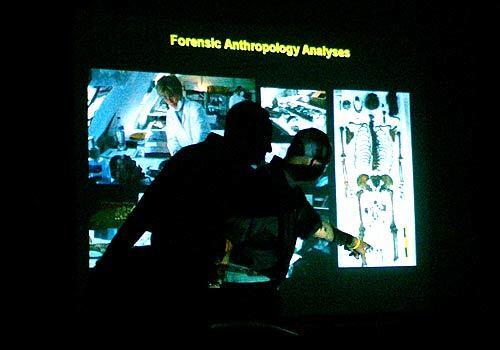
Michael “Sonny” Trimble points to a photograph of the skeletal remains of a fetus found in a mass grave site. Trimble is director of the Mass Graves Team of the Regime Crimes Liaison Office, which advises the special Iraqi court prosecuting Saddam Hussein. (Borzou Daragahi / LAT)
Scientists use forensic methods to discover identities of victims in mass grave.
Jun 26, 2006
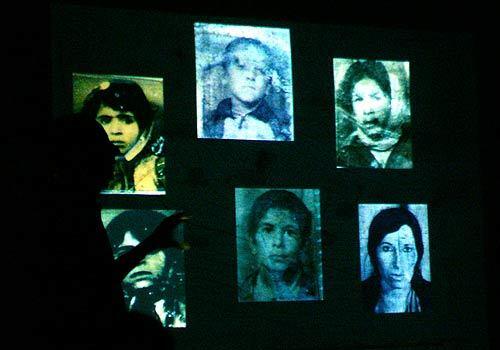
Trimble shows photographs found on the identification cards of Kurdish victims of the Anfal campaign. The fact that the cards were found at all came as a surprise to investigators. (Borzou Daragahi / LAT)
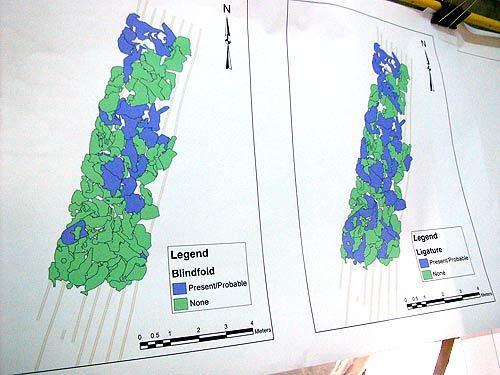
Using Geographic Information Systems technology, scientists can map out a mass grave site and analyze patterns, such as which victims wore blindfolds or had bound hands. (Borzou Daragahi / LAT)
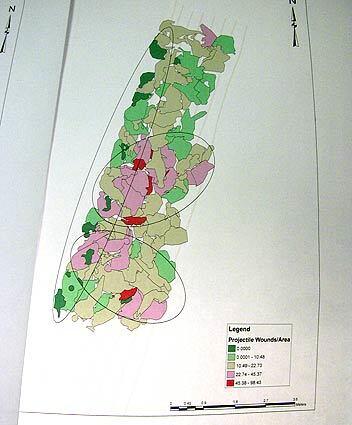
A map shows the number of bullet wounds each victim suffered. Some of the youngest victims suffered none, indicating they were either buried alive or died of blunt force trauma. (Borzou Daragahi / LAT)
Advertisement
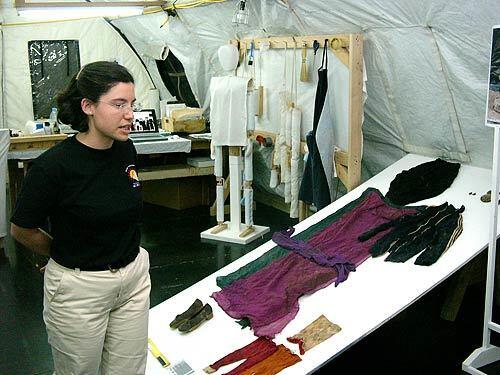
Anthropologist Ariana Fernandez, of Costa Rica, explains how clothes and personal effects are analyzed to make cultural conclusions. Fernandez is a veteran of the killing fields in the former Yugoslavia. (Borzou Daragahi / LAT)
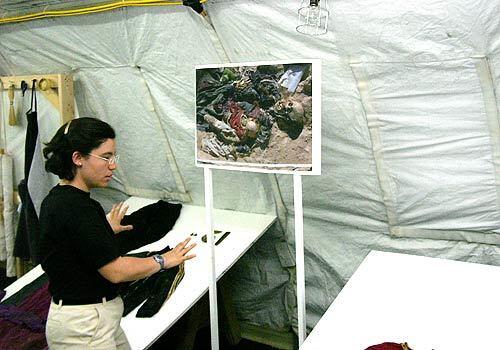
Fernandez examines an image showing the bodies that accompanied the clothes in the previous photo, as they were first discovered. (Borzou Daragahi / LAT)
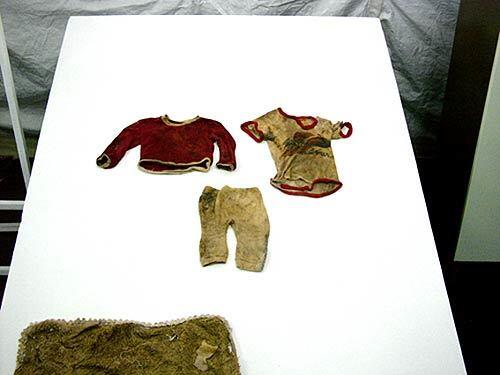
The clothes of a dead child. The t-shirt reads, “summer.” (Borzou Daragahi / LAT)
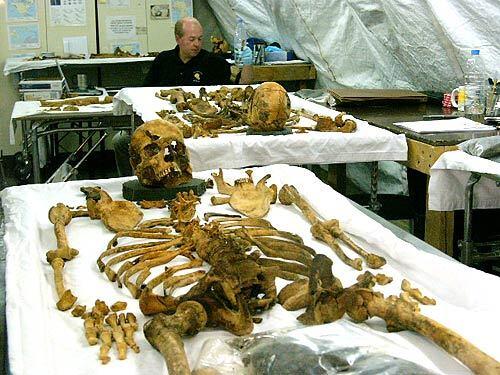
Bones of victims are laid out for examination in a laboratory. (Borzou Daragahi / LAT)
Advertisement
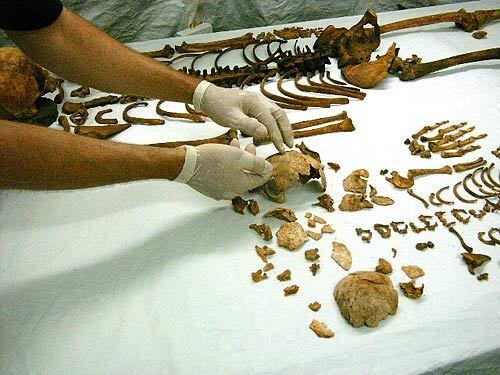
Christopher King, the doctor who oversees the forensic analysis laboratory, lifts the fragile skull of an infant, aged 6 months to one year, who was shot with a single small-caliber bullet to the head. (Borzou Daragahi / LAT)
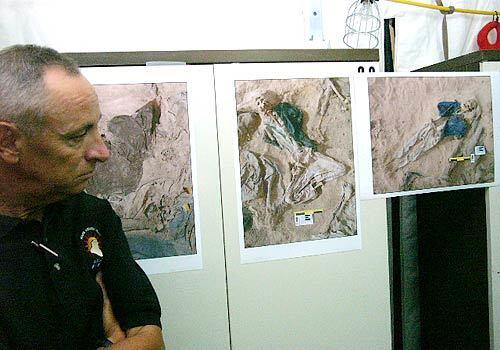
Trimble stands in front of photographs showing victims recently discovered in Karbala province. (Borzou Daragahi / LAT)







